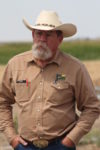 western.sare.org news regenerative-agriculture-the-next-evolution-of-sustainable-farming
western.sare.org news regenerative-agriculture-the-next-evolution-of-sustainable-farming
Regenerative Agriculture – The Next Evolution of Sustainable Farming?
...Is regenerative agriculture the new sustainable agriculture? And what is it, anyway? First thing to know is that there isn’t one universally accepted definition of regenerative agriculture. For some, it’s...
 southern.sare.org news southern-sare-awards-1m-grant-to-explore-regenerative-agriculture
southern.sare.org news southern-sare-awards-1m-grant-to-explore-regenerative-agriculture
Southern SARE Awards $1M Grant to Explore Regenerative Agriculture
...components of regenerative grazing, the team can identify more effective water management strategies, better ways to sequester carbon and the best methods for improving soil health through regenerative grazing practices....
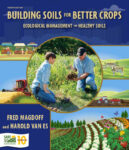 www.sare.org publications building-soils-for-better-crops cover-crops
www.sare.org publications building-soils-for-better-crops cover-crops
Ch 10. Cover Crops
...had heard about and learned of the successes of other farmers who chose a soil-first strategy for their operations. Those regenerative agriculture practices focused on reducing or eliminating tillage, ending...
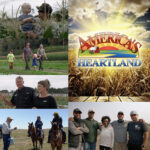 www.sare.org resources farming-strategies-for-adapting-to-extreme-weather
www.sare.org resources farming-strategies-for-adapting-to-extreme-weather
Farming Strategies for Adapting to Extreme Weather
SARE partnered with PBS KVIE to produce an episode of RFD-TV's America's Heartland that highlights how farmers and ranchers across the United States are using sustainable and regenerative practices to...
 northeast.sare.org news northeast-sare-administrative-council-approves-5-8m-for-62-projects
northeast.sare.org news northeast-sare-administrative-council-approves-5-8m-for-62-projects
Northeast SARE Administrative Council Approves $5.8M for 62 projects
...$175,000 Regenerative Organic Dry Bean Production in the Northeast Matthew Ryan Cornell University $250,000 Cornell University will expand organic dry bean production as part of a regenerative cropping system in...
 northcentral.sare.org about regional-initiatives heroes jack-erisman-ncr-sare-hero
northcentral.sare.org about regional-initiatives heroes jack-erisman-ncr-sare-hero
Jack Erisman: NCR-SARE Hero
Jack Erisman. Photo courtesy of USDA-NRCS. Jack Erisman has been a visionary Illinois farmer for more than six decades. Farming over 2,000 acres near Pana, Illinois, Jack began implementing regenerative...
 northcentral.sare.org news ncr-sares-2025-heroes-jack-erisman-and-edgar-hicks
northcentral.sare.org news ncr-sares-2025-heroes-jack-erisman-and-edgar-hicks
NCR-SARE's 2025 Heroes: Jack Erisman and Edgar Hicks
...acres near Pana, Illinois, he began regenerative practices in 1963—reducing tillage, rotating crops with cover crops, integrating livestock, and eliminating synthetic insecticides and anhydrous ammonia by 1969. In 1988, the...
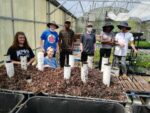 northcentral.sare.org news ncr-sares-2024-farmer-rancher-grants
northcentral.sare.org news ncr-sares-2024-farmer-rancher-grants
NCR-SARE's 2024 Farmer Rancher Grants
...$29,067 for the project, “Empowering our community through education: Making Regenerative Farming Accessible for All.” Sylvester Friend of Prairie Hills Farm in Selma, IN was awarded $14,995 for the project,...
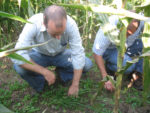 www.sare.org what-we-do professional-development fellows-program meet-the-fellows
www.sare.org what-we-do professional-development fellows-program meet-the-fellows
Meet the Fellows
...through providing wraparound support, including access to capital, land, mentorship, professional services, site visits, and management plans. On her farm she practices regenerative methods such as management-intensive grazing and silvopasture....
 www.sare.org news adapting-to-extreme-rains-and-drought-at-a-frame-farm-in-madison-minnesota
www.sare.org news adapting-to-extreme-rains-and-drought-at-a-frame-farm-in-madison-minnesota
Adapting to Extreme Rains and Drought at A-Frame Farm in Madison, Minnesota
...increasingly erratic weather through regenerative practices that focus on restoring the soil. Located on 500 acres in Madison, Minn., A-Frame Farm produces organic grains and grass-fed beef using techniques that...